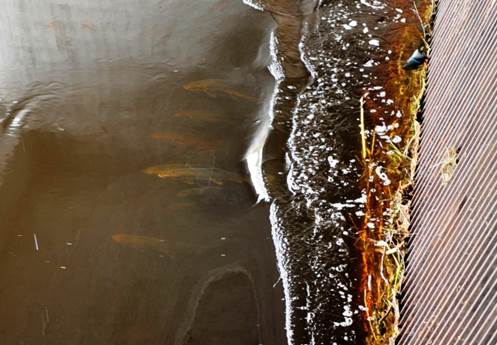Paper: Salmon kelt downstream migration and passage
Posted by Daniel Nyqvist | Projekt KlarälvenDen vetenskapliga artikeln ”Post-spawning survival and downstream passage of landlocked Atlantic salmon (salmo salar) in a regulated river: is there potential for repeat spawning?”, om efterleksöverlevnad, nedströmsmigration och passage hos lax-kelt i Klarälven, har publicerats i River Research and Applications. Författare är Daniel Nyqvist, Olle Calles, Eva Bergman, Anna Hagelin och Larry Greenberg.
I abstraktet skriver författarna: “Repeat salmonid spawners may make large contributions to total recruitment and long term population stability. Despite their potential importance, relatively little is known about this phase of the life history for anadromous populations, and nothing has been reported for landlocked populations. Here, we studied post-spawning behaviour and survival of landlocked Atlantic salmon in relation to downstream dam passage in the River Klarälven, Sweden. Eight hydropower stations separate the feeding grounds in Lake Vänern from the spawning grounds in the River Klarälven, and no measures to facilitate downstream migration are present in the river. Forty-nine percent of the salmon survived spawning and initiated downstream migration. Females and small fish had higher post-spawning survival than males and large fish. The postspawners migrated downstream in autumn and spring and remained relatively inactive in the river during winter. Downstream migration speed in the free flowing part of the river was highly variable with a median of 9.30 km/day. Most fish passed the first hydropower station via upward-opening spill gates after a median residence time in the forebay of 25 min. However, no tagged fish survived passage of all eight hydropower stations to reach Lake Vänern. This result underscores the need for remedial measures to increase the survival of downstream migrating kelts.”
Läs artikeln här. Om du inte har tillgång till tidskriftens innehåll men ändå vill läsa artikeln, maila någon av författarna!



